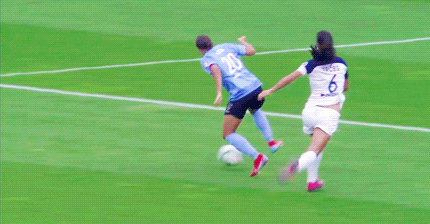
NEWS
A selection of FirstTouch's best football writing, brought to you by emerging journalists, collaborators, and fans.
African Football 101: FirstTouch’s 8 points
This blog aims to provide insight on the landscape of football in Africa through the eyes of an African. It touches on eight key points that explain the state of African football targeted at those without enough exposure of what the beautiful game means to Africa.
Introduction
Nwako Kanu, Didier Drogba, Samuel Eto’o, Yaya Toure, George Weah, Samuel Kuffor and now Mohamed Salah – these are some of the big name African footballers who have illuminated Europe’s top domestic leagues. But with so many dazzling stars over the years, what does football on the African continent really look like? Do they have leagues, transfer windows? Are there any more Sadio Mane’s that some clubs could benefit from? How do Africans and the world see their football? Well, the list of questions goes on but here is one perspective from an African.
A.It all begins with a rubbish ball
Old newspapers, plastics, string, foam rubber and a touch of fire are all the right ingredients that make a soccer ball. In the streets of Harare, kids barely five years old scan through rubbish dumps to collect materials to make their own soccer balls either because their parents cannot afford a real one or that it would smash windows when they play in the streets. That’s where stars are first made, in the tiny tarred roads separating homesteads, battling it out barefooted. Fast forward a few more years and then the kids are old enough to play in dust community football pitches or at school where they soon become town celebrities. This is largely the narrative, not only in Harare but most parts of Africa. They are not a lot of fancy football academies there.
B. Club football
Probably 1 in maybe 1000 talented footballers actually end up playing for the local clubs. Most of them are lost in the system of “get good grades to get a job,” a popular slogan of risk averse parents. But who would blame them, as most of the domestic football leagues are poorly funded and dominated not by young talent but more mature “talent” looking to fend for their families.
For those few who actually make it, there is a bit of silver lining in some leagues. For example, the South African Premier League (PSL) which is fast becoming a powerhouse. It ships players mainly from Zimbabwe, Nigeria and many other African countries because in reality, other countries seem to host better talent than them. They do have a footballing calendar closely aligned to that in Europe and transfer windows where millions of rands are spent. But for a long time, club football on the continent has been dominated by North African clubs such as Al Ahly and Zamalek.
It is in some of these football leagues, where the Mo Salahs or George Weahs are first spotted and find themselves living the dream in Europe. There is another route where affluent parents send their children to academies abroad or that the families relocate and the kids found themselves growing up in foreign countries and pursuing the dream. This is the case of Alex Iwobi, the Nigerian and Arsenal youngster who grew up in England, Delle Alli (a Nigerian adopted by English parents), Mario Balotelli and many more.
C. Internationals
Like anywhere else in the world, when nations clash, its mostly about the bragging rights. Over the years, Africa has been dominated by West Africans such as Nigeria, Ghana, Senegal, Mali and Ivory Coast. They are known for their huge physicality while North Africans who consistently rank hire boast of some scintillating passing football, probably because they are close to countries like France and Spain. But all this is slowly changing, physical or scintillating football is coming from anywhere, it all depends on who is coaching the team especially now when most African teams employ coaches from outside the continent.
In terms of performances on global tournaments like the World Cup, because of the talent both at home and abroad, Africans should be doing more. But usually, inconsistent showings are earmarked by stories of low or non-payment of allowances and lack of insurance for players.
The nicknames of most national teams are as fierce as they come, Indomitable Lions of Cameroon, Super Eagles of Nigeria, Lions of Terranga (Senegal), Warriors of Zimbabwe, Lions of the Atlas (Morrocco), Desert foxes (Algeria), Copper Bullets of Zambia, the list is endless. What a powerhouse of names!


